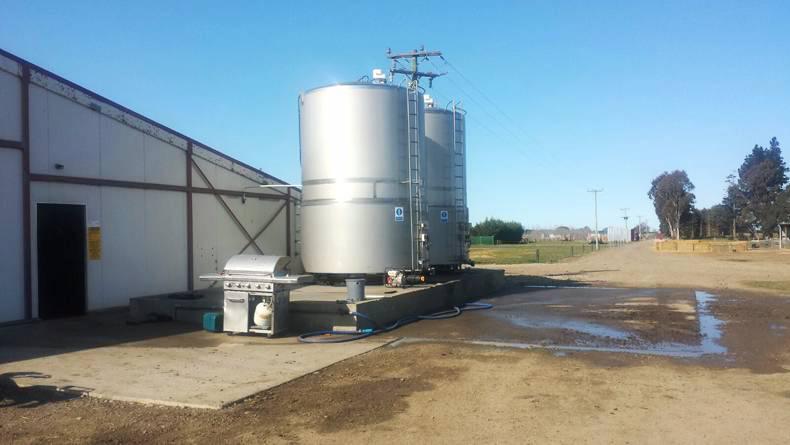I’m based on a 1,450-cow farm in Mid-Canterbury, New Zealand. We have a grazing block of 375ha, giving the block a stocking rate of 3.8cows/ha. On the block there is an 80-bale DeLaval rotary parlour. There are seven full-time staff. A farm manger oversees everyone, then it is broken down into a second in charge (2IC for short), a milking parlour manager, herd managers, farm assistants and tractor drivers.
At the minute calving is in full swing. We have 1,000 cows calved to date, with 450 left. There are about six weeks left in the calving season so we will probably average 15 calves a day for the next three weeks and around eight calves per day for the last three weeks.
My day starts with cups (clusters) on at 5am and I have normally gone home by 5.30pm. At the minute we have someone on night checks for calving and first thing in the morning as well as 1pm and 5.30pm as we are getting cows down with milk fever daily and we lost one cow due to milk fever while calving last week. We have 380 replacement calves so far. The target is 450 and we should reach this.
We have the oldest calves on once-a-day milk ad-lib and lucerne straw. There are 120 calves on this diet divided into groups of 40 and they are all outside in paddocks. The rest of the calves are on twice-a-day milk being fed eight litres plus straw.
800 cows
We have 800 cows going into the bulk tank. We are running three main herds – one with 500 cows; the next with 200 mostly heifers; and one with 100 cows on once-a-day, which are in low body condition score. As well as these three herds, we have a penicillin group and a colostrum group. It might sound like a lot of groups, but it is easier to manage as we have dump line on the rotary.
The cows are producing 1.9kg milk solids per head, with a somatic cell count of around 200,000 cells per ml. It is high but we are stripping them daily so it should drop quickly. The milking cows are currently on a diet of grass, silage, fodder beet and palm kernel. We are buffering feeding at the minute as our farm cover is at 720kg/ha. Feed is relatively cheap so we are not too worried and weather is good and dry so utilisation is good.
Mood in New Zealand
Since I was last here, things have changed quite a bit – mostly due to milk price. From what I’ve seen, farmers here in low-cost systems and in good share-milking relationships will be OK. The key to this seems to be budgeting everything and where to pull costs back in all aspects on the farm.
Budgeting
One thing that strikes me here is no matter how poor the milk price is, farmers come across as positive because they have done their budgets and know how low milk price can go before the farm is at a loss and performance drops. Breakeven costs are mentioned a lot. I think farmers in Ireland should look to this instead of blaming the big co-ops and being negative, as it’s a worldwide struggle at the minute with milk prices down everywhere.
I’ll have more detailed figures next week on the costs of production.
Waterford dairy farm management student Ciaran Fogarty has just returned to New Zealand to work on a dairy farm in Mid-Canterbury for six weeks







 This is a subscriber-only article
This is a subscriber-only article













SHARING OPTIONS: